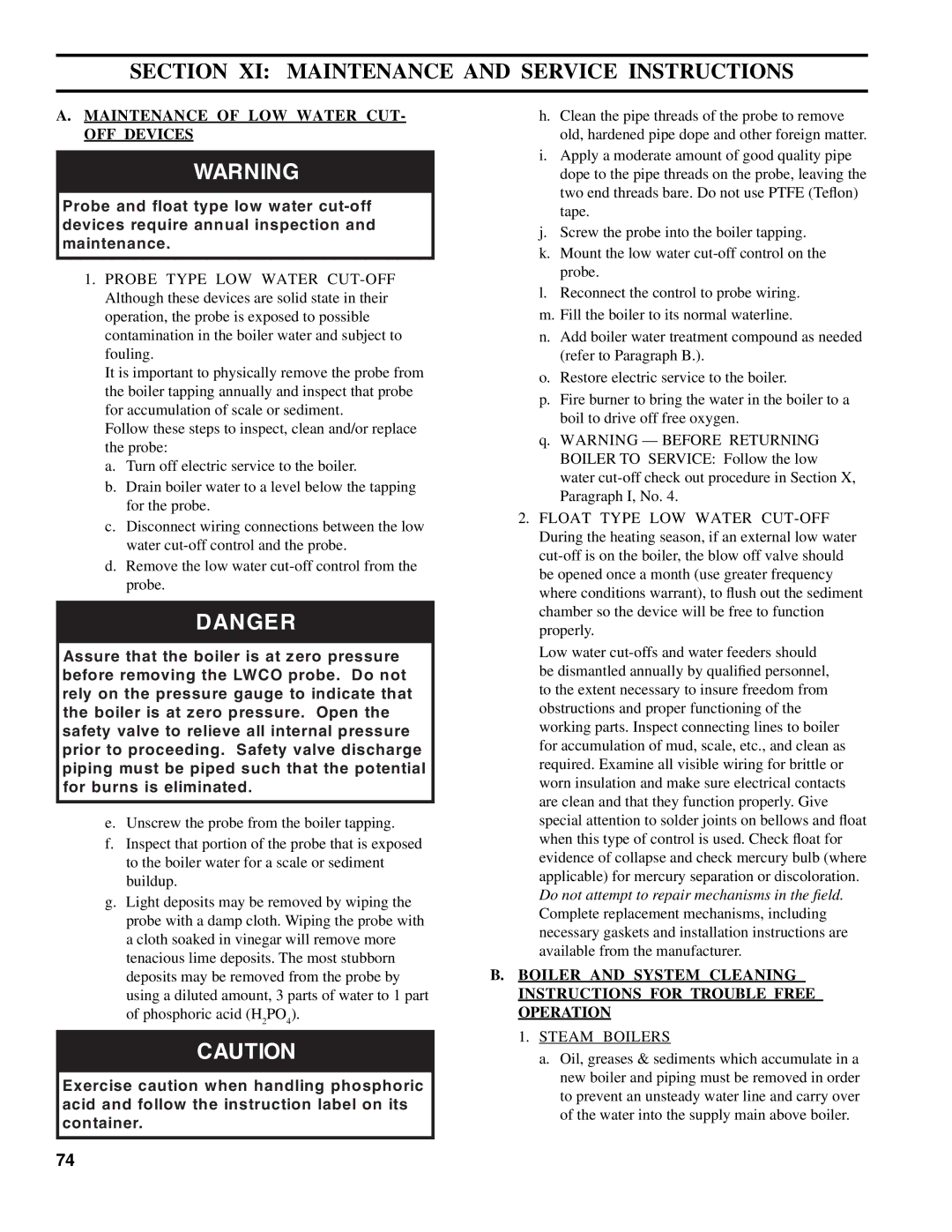V8 Series specifications
The Burnham V8 Series is a prestigious line of oil-fired boilers renowned for their efficiency, reliability, and advanced design features. Tailored for residential and light commercial applications, this series exemplifies the perfect blend of tradition and modern technology, ensuring long-term performance and comfort for users.One of the hallmark features of the Burnham V8 Series is its exceptional cast iron construction, which provides durability and superior heat retention. This robust design allows for an extended lifespan while ensuring that the boiler can withstand the rigors of daily use. The cast iron sections are engineered to facilitate optimal heat transfer and efficiency.
The V8 Series boasts an impressive fuel efficiency rating, often exceeding 85%. This high efficiency is achieved through a combination of advanced combustion technology and the boiler's thoughtful design, which minimizes heat loss. Users benefit not only from lower energy bills but also from a reduced environmental footprint, making the Burnham V8 Series a sustainable choice for heating solutions.
In terms of technology, the Burnham V8 Series features a standing pilot ignition system or an optional intermittent ignition device that enhances safety and efficiency. The advanced burner design allows for smooth operation and excellent fuel utilization, further contributing to the overall economy of the system.
Another notable characteristic is the versatility of the Burnham V8 Series. It can be easily adapted to work with various heating systems, including hot water heating applications. Its compatibility with different fuels, such as natural gas or oil, gives users the flexibility to choose the best energy source for their needs, providing longevity and value.
The installation process is made straightforward with ample connectivity options for plumbing and flue. Its compact design enables easier placement within homes or commercial spaces without compromising performance. Furthermore, the boiler is backed by extensive warranties, ensuring peace of mind for homeowners and businesses alike.
In conclusion, the Burnham V8 Series stands out as a reliable and efficient heating solution, blending robust construction with advanced technology. Its commitment to performance, versatility, and efficiency makes it an excellent choice for meeting the heating demands of various applications while promoting environmental responsibility. Whether for a single-family home or a light commercial building, the Burnham V8 Series remains a trusted leader in the industry.

